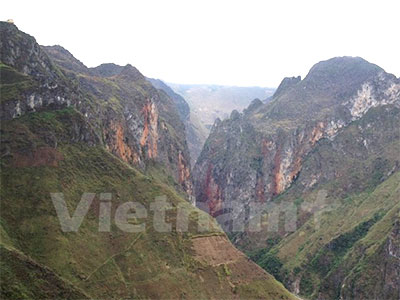Lung Cam Tren village in the northern mountainous province of Ha Giang has been positively transformed owing to Dong Van district’s 2010 decision to develop it into a ‘Cultural Village’ in line with new style rural area regulations.
 |
|
A canyon of the Dong Van Stone Plateau |
The village is home to 70 households and more than 300 people, 96 percent of whom are from the Mong ethnic group.
Local people have actively engaged in community tourism by upgrading their homes into visitor accommodation, growing more ornamental plants and removing breeding sites away from housing areas. Traditional cultural shows are now regularly performed for tourists.
The village welcomed at least 100 groups of foreign travellers last year.
Mua Sia Mua, a local resident, said his family earned an extra of 3-5 million VND each month from homestay services offered during the tourism seasons.
Meanwhile, the upgrading of local infrastructure - including roads, the water supply network and irrigation systems, alongside the building of community houses - have helped improve living standards and lure more visitors.
The local authority has encouraged the residents to grow high-yield crops and breed good-quality animals, enabling the commercialisation of livestock production and improved productivity.
Intensive farming of maize, soy beans and grass used in cattle breeding are among several effective agricultural models employed by the villagers.
The locals’ incomes have been improved further by the development of extra businesses, including traditional brocade weaving and metal forging.
Dong Van district is home to the spectacular Dong Van Stone Plateau, which was recognised as a member of the Global Network of National Geoparks (GGN) in 2010.
The plateau is 80 percent limestone and contains the fossils of thousands of species of prehistoric creatures, which roamed the region 400-600 million years ago.
Ha Giang has a great potential for developing tourism, like the plateau, and is seeing to become one of the country’s key tourist centres.